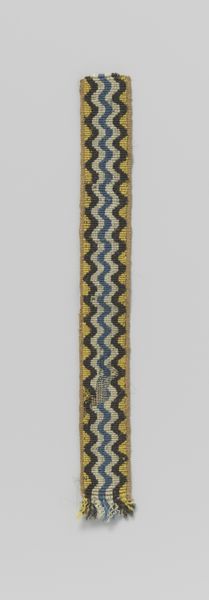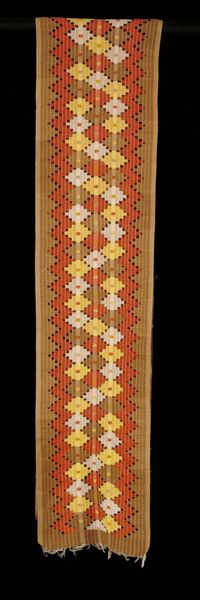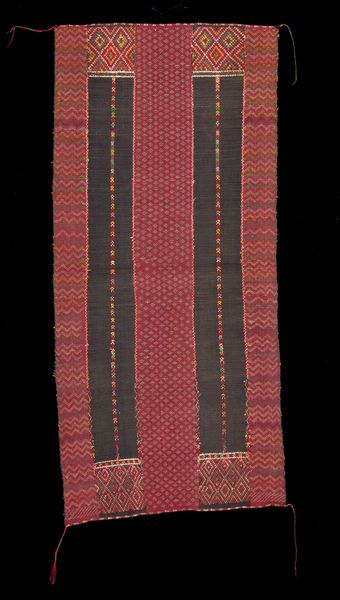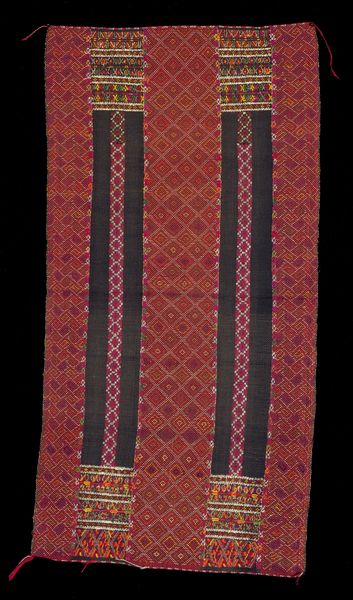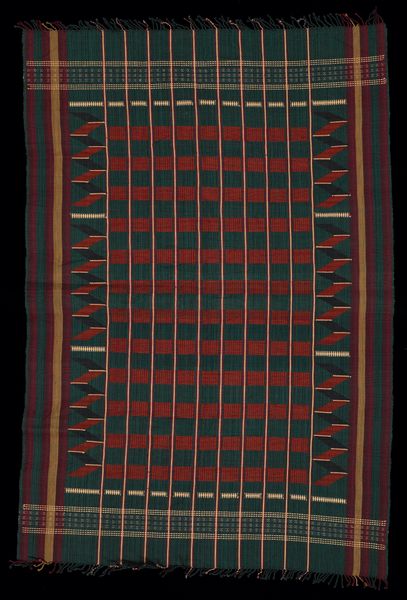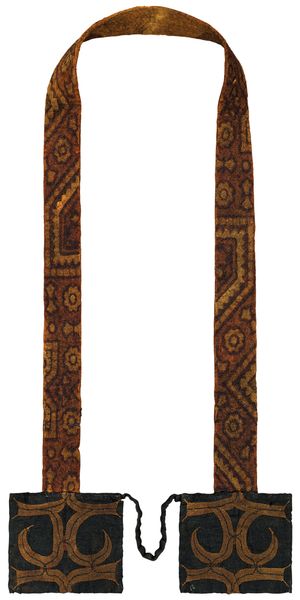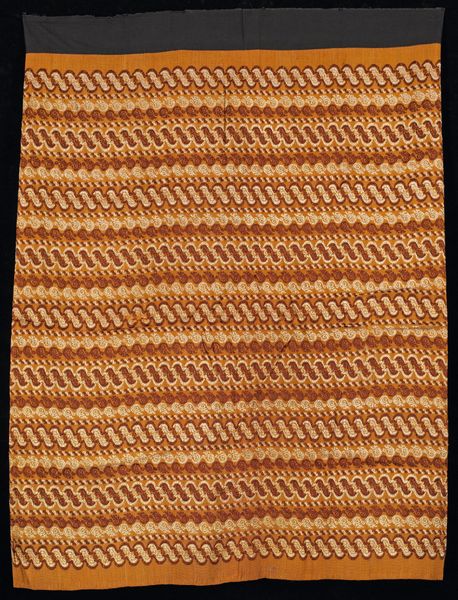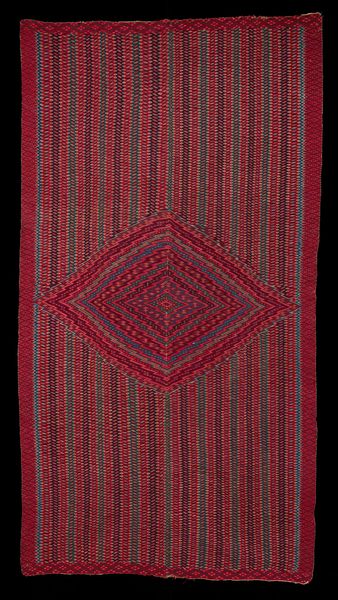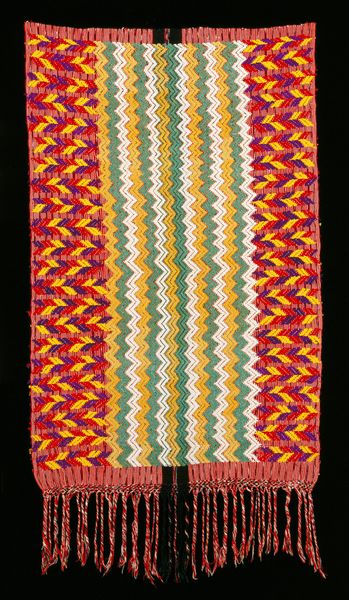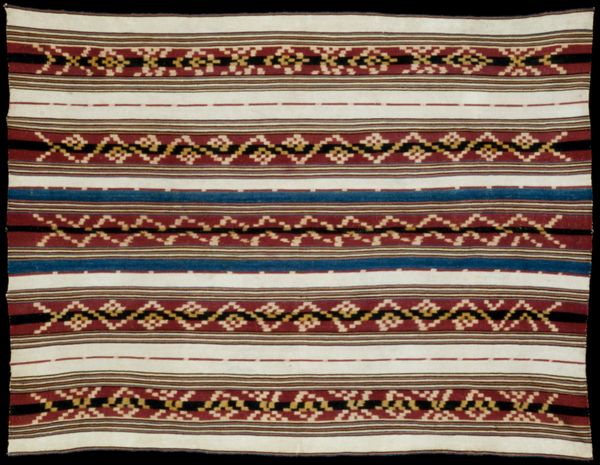
Livreiband van wol, zwart met witte ruiten op een fond van kepers in geel en rood c. 1700 - 1900
0:00
0:00
weaving, textile
#
man-made pattern
#
weaving
#
textile
#
repetitive shape and pattern
#
geometric
#
abstraction
#
decorative-art
Dimensions: length 40 cm, width 4.5 cm
Copyright: Rijks Museum: Open Domain
Editor: Here we have an example of textile art; it’s a woven livery band of wool from around 1700 to 1900. It features black diamonds on a patterned ground of twilled yellow and red. It’s quite striking, actually. The colors are still so vivid after all these years. What do you see when you look at it? Curator: The immediate visual impact derives from the repetition of the geometric figures. Note how the artist has constructed the band, utilizing the warp and weft to create not only a stable structure, but a deliberate composition. The diamond motifs, rendered in contrasting colours, command attention, yes? How would you describe their placement? Editor: Well, they're stacked vertically, each one connected to the ones above and below... almost like they are mirroring each other. And the geometric pattern between them adds a secondary level of visual complexity. Curator: Precisely. The visual impact comes from that precise relationship between positive and negative space. Now, consider the choice of materials: the wool itself, with its inherent texture. How does this texture contribute to your perception of the work? Editor: It gives it a certain warmth. You can almost feel the material just by looking at it, even digitally. Does this repetitive diamond pattern tell us anything about the textile's use, or even the weaver’s intentions? Curator: That would move beyond a Formalist approach. As Formalists, we concentrate primarily on these formal qualities – line, shape, colour, and texture and how these elements interact to create a cohesive and visually engaging composition. The ‘why’ of artistic intention necessitates additional avenues of scholarly investigation. Editor: That’s fascinating! I guess I hadn't realized just how much you can appreciate simply by looking so closely at the piece itself. Curator: Indeed, careful observation provides a strong aesthetic foundation from which broader discussions may spring forth.
Comments
No comments
Be the first to comment and join the conversation on the ultimate creative platform.
